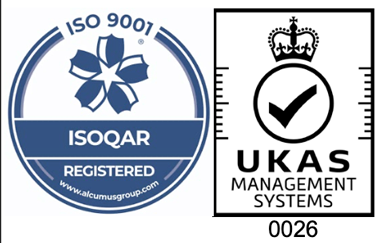How are marine hatch seals made?
15th May, 2019
If you've ever stood on the beach watching a cargo ship slowly creep across the horizon, the material used in the manufacture of its hatch seals was probably the last thing on your mind. However, ocean-going vessels have been braving the elements for thousands of years, and whatever their function, there has always been one primary aim - to keep the water out.
Traditionally, the hatch openings of ships were covered with wooden boards, beams, and tarpaulins. Ever heard the phrase ‘batten down the hatches’ yelled by pirates in films? In the past, this cry signified the crew’s cue to start securing the hatch and ensuring it was watertight.
As time went on, advancements in modern technology meant shipbuilders could use steel and rubber gaskets to create a watertight seal. Nowadays, hatch seals are made of rubber and typically fit into a groove between two steel plates. Without them, ocean-going vessels simply could not safely navigate deep waters.
Where are marine hatch seals used?
Marine hatch seals are used on all types of ocean-going vessels; from cargo ships, oil tankers and chemical tankers, to Royal Naval vessels, luxury cruise ships, and even private yachts.
They’re commonly used to protect cargo, so keeping them in tip-top condition is crucial. Regular maintenance and checks are advised in order to save money in the long run – if the hatch seal is leaking onto your expensive shipments (or passengers), it’s going to cost a lot more than it would have done to simply replace the seal in the first place.
Plus, marine hatch seals can be designed to fit bespoke applications, such as those located on chemical tankers. With the right compound, a bespoke marine hatch seal can add an extra layer of fire protection or corrosion resistance to an already well-protected vessel.
What are marine hatch seals made from?
Depending on the application at hand, the materials used in the manufacture of a marine hatch seal will vary. Looking to repair the small seal on your holiday yacht? You may very well be looking at a hatch seal made from neoprene, EPDM, or natural rubber. Neoprene is best suited to higher temperatures, whereas nitrile options are more effective in environments where gas and oil resistance will be necessary.
Complex applications require bespoke solutions. Compound formulations can be made custom if necessary, whether this is to meet the demands of a particular application or to ensure the hatch seal meets regulatory standards.
Why should I purchase marine hatch seals from Aquaseal Rubber?
If you’re in need of a bespoke rubber hatch cover seal, or simply a well-produced standard to replace one that’s worn out, speak to a member of the Aquaseal Rubber team.
We’ve been manufacturing marine hatch seals for over 40 years for one-off jobs, and also for leading hatch cover suppliers worldwide. In the past, we’ve travelled to do onsite examinations of existing hatch seals in order to offer advice, support, and a plan for the new hatch seal going forward.
Interested? Get in touch today. We’re available on 0191 266 0934, or if you’d prefer to email us you can reach us at enquiries@aquasealrubber.co.uk


